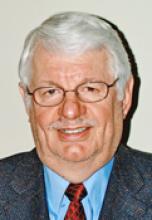It was Soren Kierkegaard who said: “Life can only be understood backwards; but it must be lived forwards.”
So what lies ahead for Canadian Mennonite? After four years at the helm of this publication, I see challenges ahead in three major areas of our church life together:
1. Technological and demographic changes
In the fast-moving communication environment of the 21st century, we are holding fast to a print product that has served us well for the past generation. In a 2011 readership survey, mostly older respondents were adamant that we continue our efforts on the printed page, rather than succumb to the faddish new ways brought on by the Internet—receiving information electronically on computer screens and smart phones.
While we have developed a website and are active in social media networking, our business/distribution model remains running on traditional rails—putting words on paper and distributing them through the mail to some 13,000 households under an Every Home Plan across Canada. The model is slow and archaic—and must change. Delivery of the content of Canadian Mennonite will slowly but surely change to more electronic and less print. Right now, our board and staff are working intentionally at specific ways to make this happen.
More emphasis will be placed on visual presentation of our content, meaning more use of photography and video, and more linking to background sources in our reporting and commentary.
The overall narrative will lean more towards personal expressions of faith, and more focus on vision and experience, while not neglecting the intellectual undergirding as a context for our stories.
Unite a diverse culture
Just as an English-language publication brought together diverse cultures of Mennonites 60 years ago with the launching of The Canadian Mennonite, this publication is destined to bring together new multicultures of new congregations representing the cutting edge of our denomination today. As time has brought changes to our own character of European origin, so the new ethnicities from all over the world are bound to change both our culture and language over the next millennium.
And we have not yet entirely amalgamated the east-west and Swiss-German/Russian differences in our attempts at a common ethic and theology. The 1999 merger may have brought together two major bodies—the General Conference Mennonites and the Mennonite Church—and the separation of the American and Canadian structures, but it is a little like the adage: “You can take the boy out of the country, but you can’t take the country out of the boy.”
In polity, the predominantly Russian General Conference Mennonites were accustomed to strict autonomy of the congregation in faith and practice, while the largely Swiss-German Mennonite Church was more hierarchical, investing authority in bishops and conference leaders, and looking to their church institutions to divine confessions of faith. While we are striving to work through these different approaches, deep-seated orientations die slowly.
Third-generation Mennonite migrants—18 to 34-year-olds—have little awareness of these divides and even less patience with them. In some cases, they are striking out on a “third way” as they develop their faith. It is the ongoing challenge of Canadian Mennonite to bring focus to the things that unite us in our faith, rather than those cultural aspects that might continue to divide.
3. A progressive theology
More important than bridging this cultural divide is to come to some common ground on just what our core Anabaptist-inspired beliefs are and how will we bear witness to them in our faith and practice. The four pillars that have held us together for nearly 500 years are a strong belief in biblical authority, community, discipleship and peace. All of these are anchored in what the Apostle Paul told the ancient Corinthians: “No other foundation can anyone lay than that which is laid, which is Jesus Christ.”
The formation of our faith, however, is unfinished business. Ours is a “progressive” faith. We are on a journey. We, as a faith community, have not reached our destination. To that end, Canadian Mennonite will continue to push the edges, explore new pathways, and listen to our sisters and brothers as they call us to new witness and action.




Comments
Dick, you are right to suggest that our 'anchor' is the Corinthian passage on the foundational place of Jesus Christ in our Mennonite journey. Your final line ("Canadian Mennonite will continue to push the edges, explore new pathways, and listen to our sisters and brothers as they call us to new witness and action.") is great, but it could be made better if Canadian Mennonite would NOT ONLY "explore new pathways", "push the edges", and "call us to new witness" BUT ALSO find ways of highlighting, recalling, and celebrating that foundational Christo-centric impulse of Anabaptism, as articulated by Paul.
Progressive theology only moves forward faithfully if we know the starting/central point of all movement, which is Jesus Christ. It's by Him that we discern which edges are faithful to push, which new pathways are healthful, and which 'new witness' points us to the in-breaking Kingdom of God rather than to some other Kingdom.
Add new comment
Canadian Mennonite invites comments and encourages constructive discussion about our content. Actual full names (first and last) are required. Comments are moderated and may be edited. They will not appear online until approved and will be posted during business hours. Some comments may be reproduced in print.